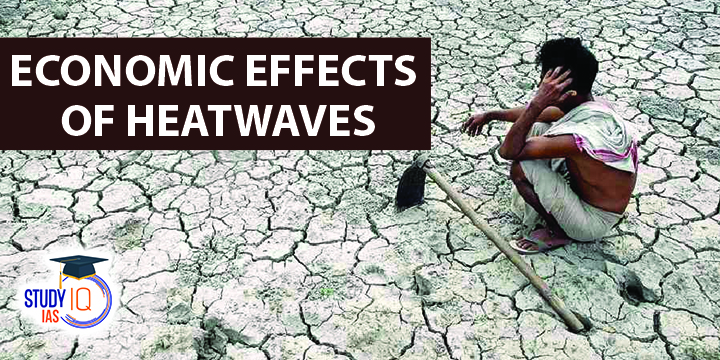Table of Contents
Economic Effects Of Heatwaves Highlights
- Economic Effects of Heatwaves:
- Economic losses: Periods of extreme heat cost the global economy about $16 trillion dollars between 1992 and 2013.
- Reduced labour productivity: Multiple areas of the economic sector experience reduced worker productivity during heatwaves, especially agriculture and construction.
- Globally, 2% of total working hours is projected to be lost every year, either because it is too hot to work or because workers have to work at a slow pace.
- Impact on agriculture: Lower agricultural yields, reduced labour productivity, heat stress will increase drought and exacerbate water scarcity for irrigation.
- Impact on transportation: Heat stress can negatively impact transport infrastructure, such as the softening of pavement, which can then be substantially damaged by vehicle circulation.
- Indirect economic costs: Heat related illness and mortalities, heatwaves may aggravate social inequalities (as the poor are more vulnerable to the impacts of heatwaves).
- Poor countries are more vulnerable: In the last 30 years, the richest countries have lost about 1.5 percent of their annual per capita GDPs dealing with heat waves, while the poorer countries have lost about 6.7 percent of their annual per capita GDPs.
- Reasons for the disparities:
- Poor countries are often situated closer to the tropics, where temperatures are already warmer. During heat waves, they become even hotter.
- Also, the adaptive capacity of poor nations to the impacts of heatwaves is generally low.
- Latitudinal variation of economic effects: Extreme heat significantly decreases economic growth in warm regions, weakly affects growth in temperate regions, and increases growth in cold regions.
- Tropical regions lose more income when extreme heat increases as they are more vulnerable.
- Mid-latitude regions in the United States and southern Europe lie in a weakly affected transition zone.
- High-latitude regions gain economically as their baseline temperatures are too cold for optimal growth.
Economic Effects Of Heatwaves Adaptations Suggested by the Study
- Technological adaptations: Strengthening heat resilience and early-warning capabilities may yield disproportionate economic benefits.
- Infrastructural adaptations: Such as air conditioning and expanded green spaces, could deliver major benefits.
- Contingent and temporary adaptations: Such as converting public spaces into cooling centers, deploying public evaporative cooling systems, and expanding emergency service availability.
Economic Effects Of Heatwaves: What are Heatwaves
- Heat waves are extreme events in which hot temperature in summer months persist for a relatively long period of time.
- In India, heatwaves typically occur between March and June, and in some rare cases even extend till July.
- Criterion for declaring a heatwave in India (as per IMD):
| Heat wave is considered if maximum temperature of a station reaches at least 40°C or more for Plains and at least 30°C or more for Hilly regions. | |
| Based on Departure from Normal | Based on Actual Maximum Temperature |
|
|
| Note: If above criteria met at least in 2 stations in a Meteorological sub-division for at least two consecutive days, then the heatwave will be declared on the second day. | |
| Criterion for describing a heatwave in coastal stations: When maximum temperature departure is 4.50C or more from normal, Heat Wave may be described provided actual maximum temperature is 370C or more. | |
- Formation of Heatwaves

- Role of climate change: The global warming is poised to make heat waves longer, more intense, and more frequent.
- The IPCC’s 6th Assessment Report projects that, for 1.5°C of global warming, there will be increasing heat waves, longer warm seasons and shorter cold seasons.
- The report also predicted that India will suffer more frequent and intense heat waves as well as increased precipitation in the remaining decades of the 21st century.


 100 Years of CPI: Origins, Ideology, Fre...
100 Years of CPI: Origins, Ideology, Fre...
 Santhali Language: History, Script, Cons...
Santhali Language: History, Script, Cons...
 How African Reserves Eliminated Rhino Po...
How African Reserves Eliminated Rhino Po...

























